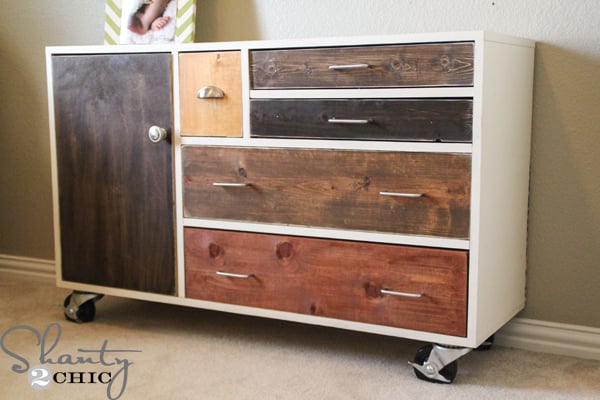
This is a free project plan with step by step instructions to build your own modern patchwork dresser.
This dresser features different drawer sizes, with drawer faces that can be stained different colors to add more interest to the piece. Free plans include diagrams, shopping and cut list, and lots of reader submitted photos - from Ana White.com
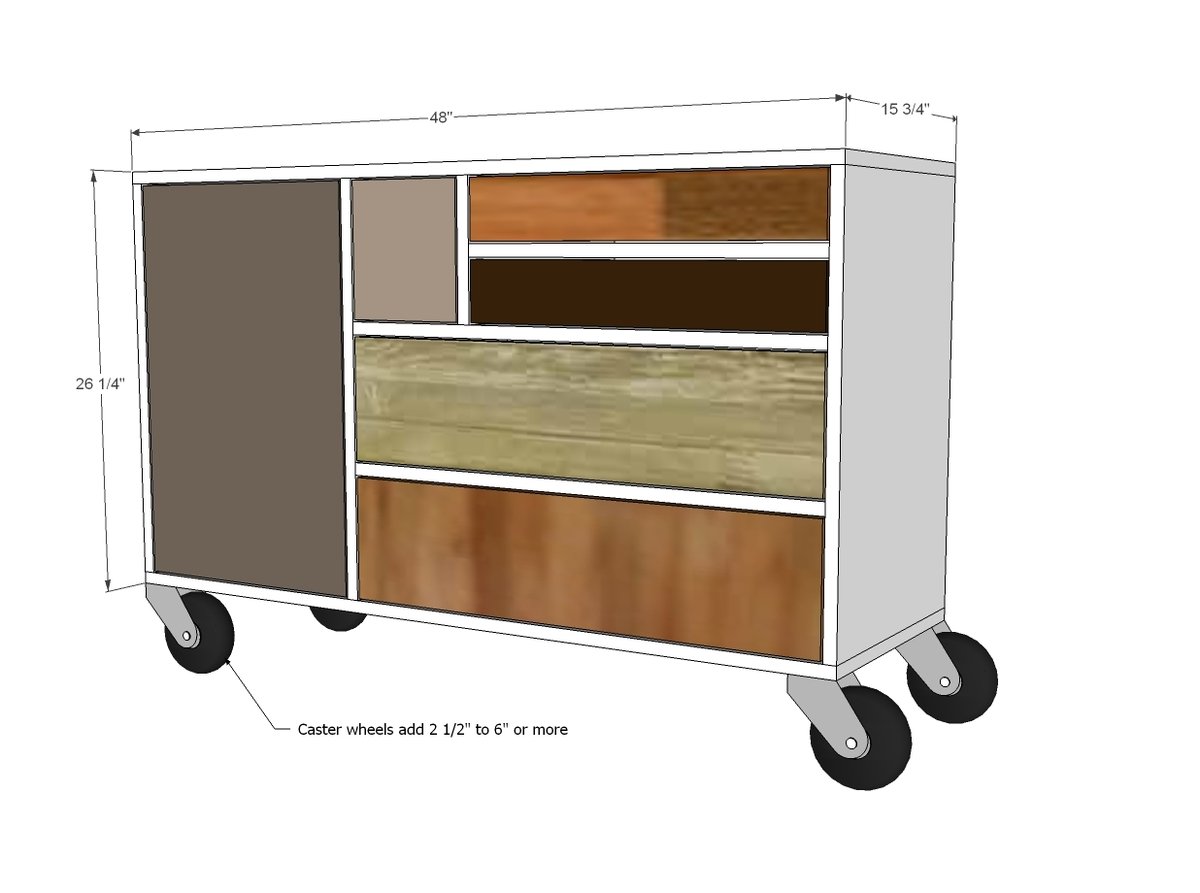
Preparation
- 1 - sheet 3/4” plywood ripped into 15 3/4” wide strips
- 1/2 sheet 1/4” plywood (for drawer bottoms and backs)
- 1 - 1x6 @ 8 feet long
- 1 - 1x6 @ 10 feet long
- 1 - 1x3 @ 8 feet long
- 1 - 1x4 @ 4 feet long - MUST BE 3 1/2" WIDE
- 1 - 1x8 @ 6 feet long - MUST BE 7 1/4" WIDE
- 5 sets 14” White European Style bottom corner mount drawer slides
- 4 Caster Wheels
- 1 set FULL INSET concealed hinges for Euro Style Cabinet (no face frame)
- Edge banding if desired
- 3 - 3/4” plywood @ 15 3/4” x 24 3/4”
- 1 - 3/4” plywood @ 15 3/4” x 29 3/4”
- 1 - 3/4” plywood @ 15 3/4” x 8 1/4”
- 2 - 3/4” plywood @ 15 3/4” x 48”
- 2 - 1x2 @ 21 1/2”
- 2 - 1x2 @ 29 3/4”
DRAWERS - Recommend cutting to fit slides and measured openings
- 6 - 1x6 @ 14”
- 2 - 1x6 @ 5”
- 4 - 1x6 @ 27 1/4”
- 2 - 1x3 @ 14”
- 2 - 1x3 @ 19”
- 2 - 1/4” plywood @ 20 1/2” x 14”
- 2 - 1/4” plywood @ 28 3/4” x 14”
- 1 - 1/4” plywood @ 6 1/2” x 14”
DRAWER FACES
- 2 - 1x4 @ 21 1/4”
- 1 - 1x8 @ 8”
- 2 - 1x8 @ 29 1/2”
- 1 - 3/4” plywood @ 15 3/4” x 24 1/2”
- 1 - 1/4” plywood 48” x 26 1/4”
Please read through the entire plan and all comments before beginning this project. It is also advisable to review the Getting Started Section. Take all necessary precautions to build safely and smartly. Work on a clean level surface, free of imperfections or debris. Always use straight boards. Check for square after each step. Always predrill holes before attaching with screws. Use glue with finish nails for a stronger hold. Wipe excess glue off bare wood for stained projects, as dried glue will not take stain. Be safe, have fun, and ask for help if you need it. Good luck!
Instructions
Step 1
NOTE: This slide (and all others in this dresser) MUST be attached inset 3/4” (not shown in diagram) to allow for the drawer face frames to be attached in later steps. If you are using drawer slides for the little drawer, it will be much easier to install the cabinet members now instead of when the space is super tight. Attach shelf with 3/4" pocket holes and 1 1/4" pocket hole screws and glue. This is a dresser, so make sure you are very precise when attaching boards, square all the way down - or your drawers will be cockeyed when the slide. TIP: Drill 3/4" pocket holes on top and bottom edge of divider for attaching top and bottom in step 3. Drill 3/4" pocket holes on end of shelf for attaching side in step 3.
Step 2
Step 3
Step 6
Step 7
Step 8
It is always recommended to apply a test coat on a hidden area or scrap piece to ensure color evenness and adhesion. Use primer or wood conditioner as needed.



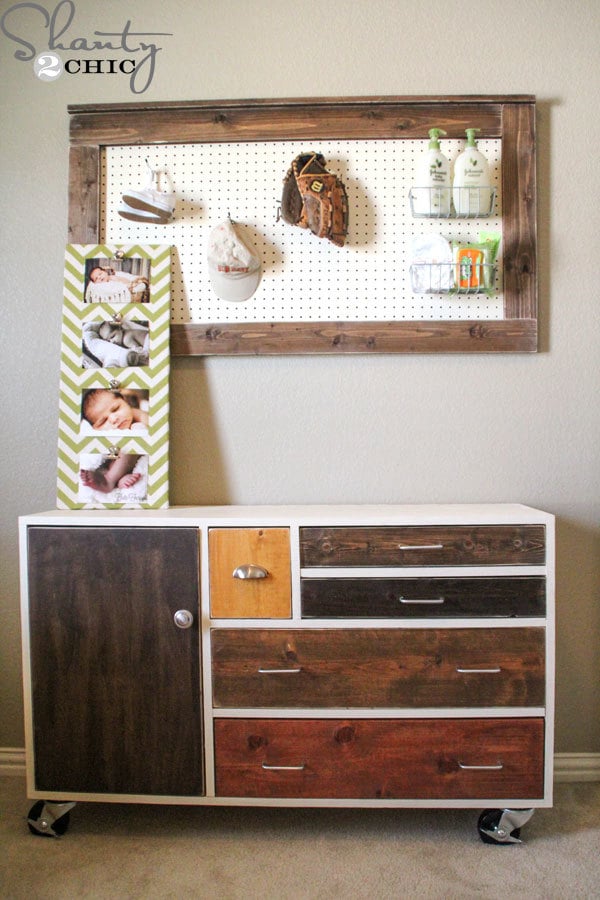
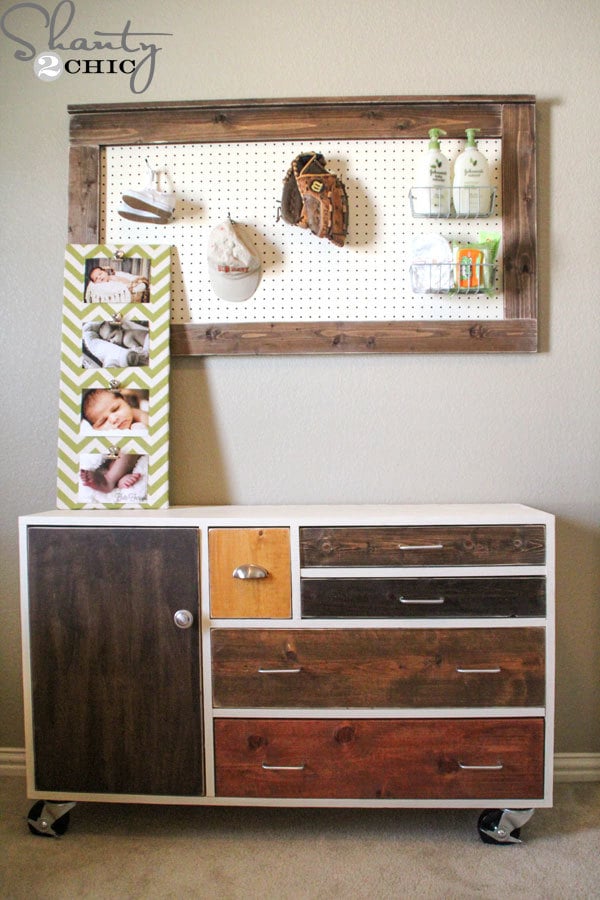










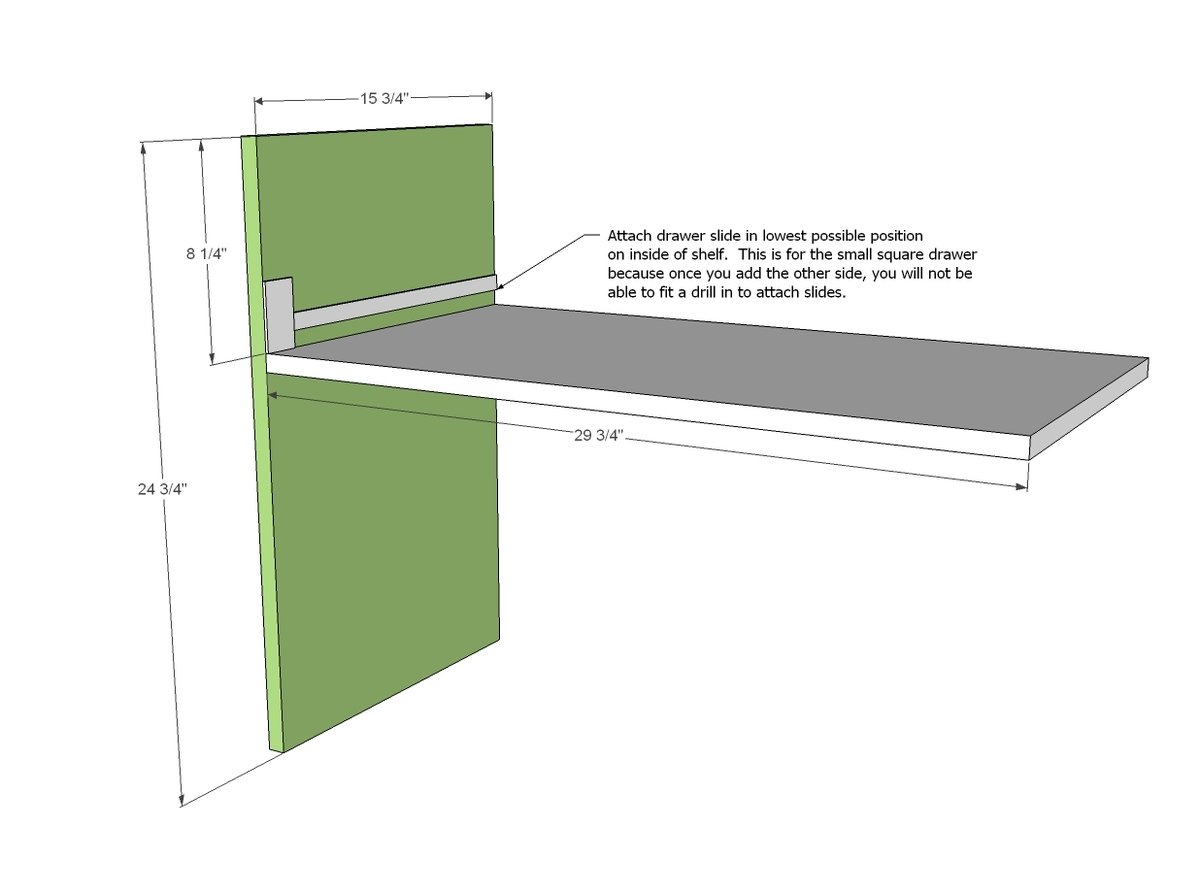

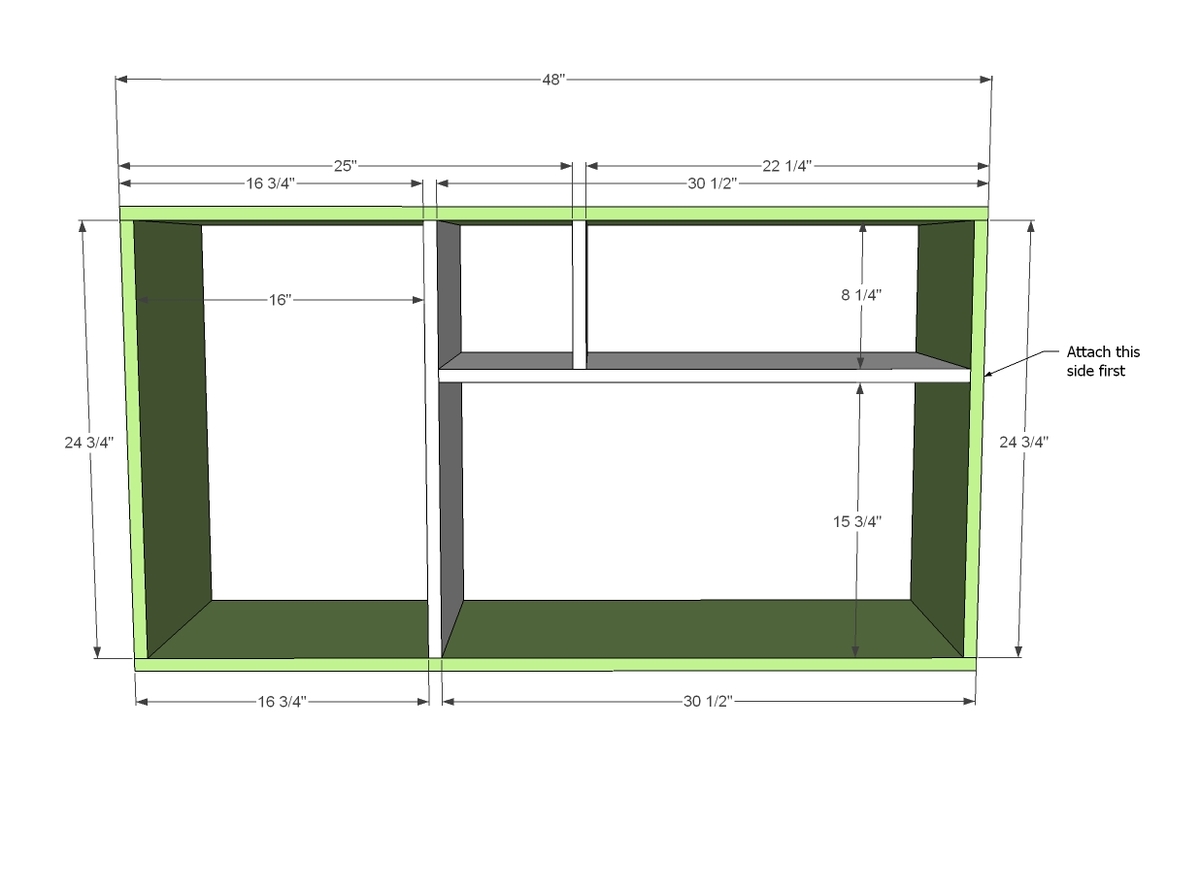
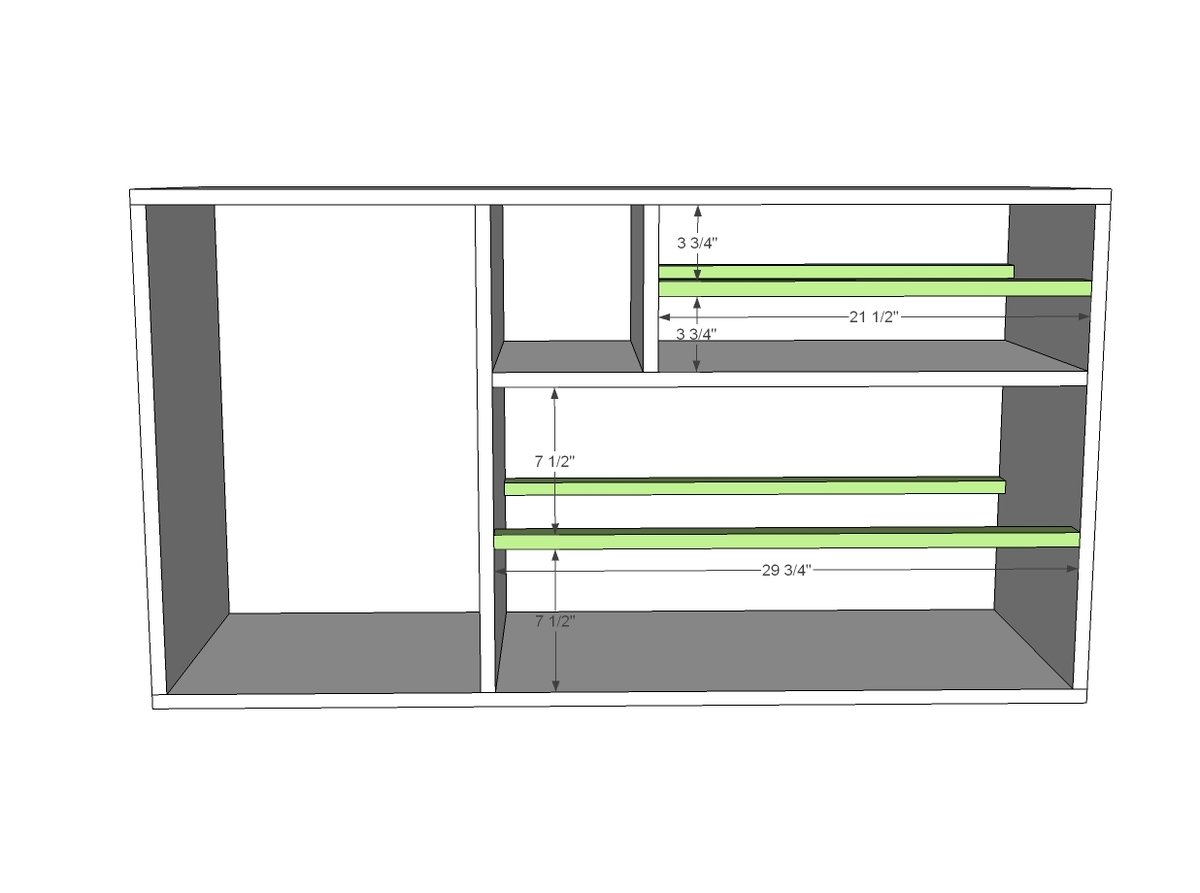
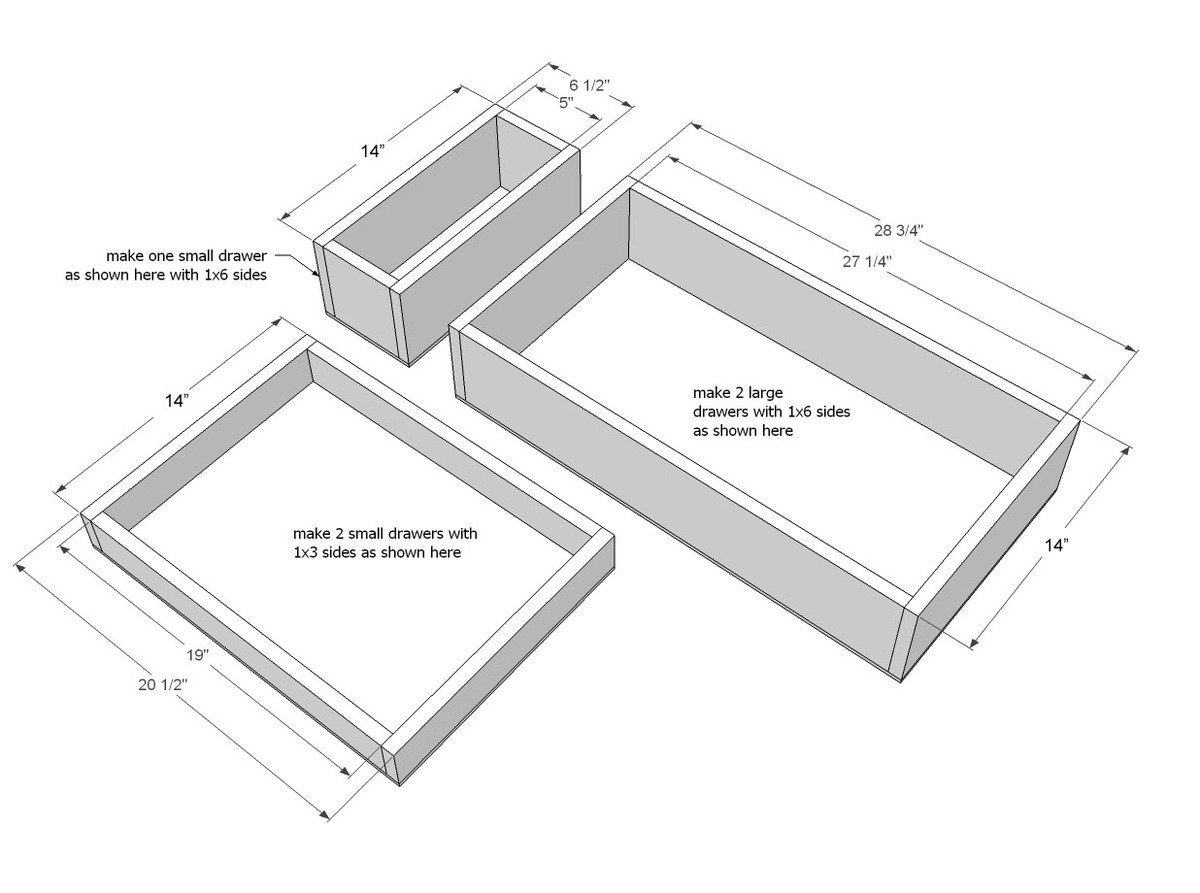
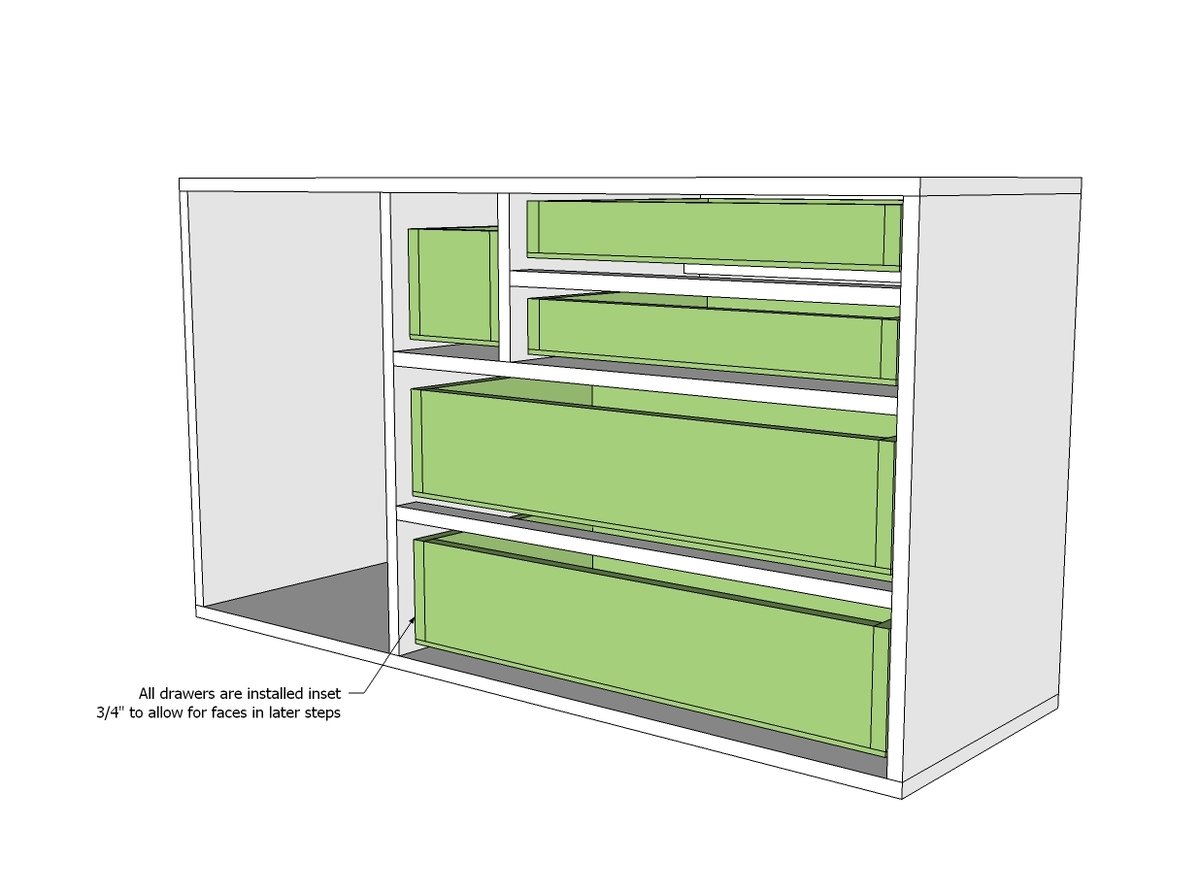

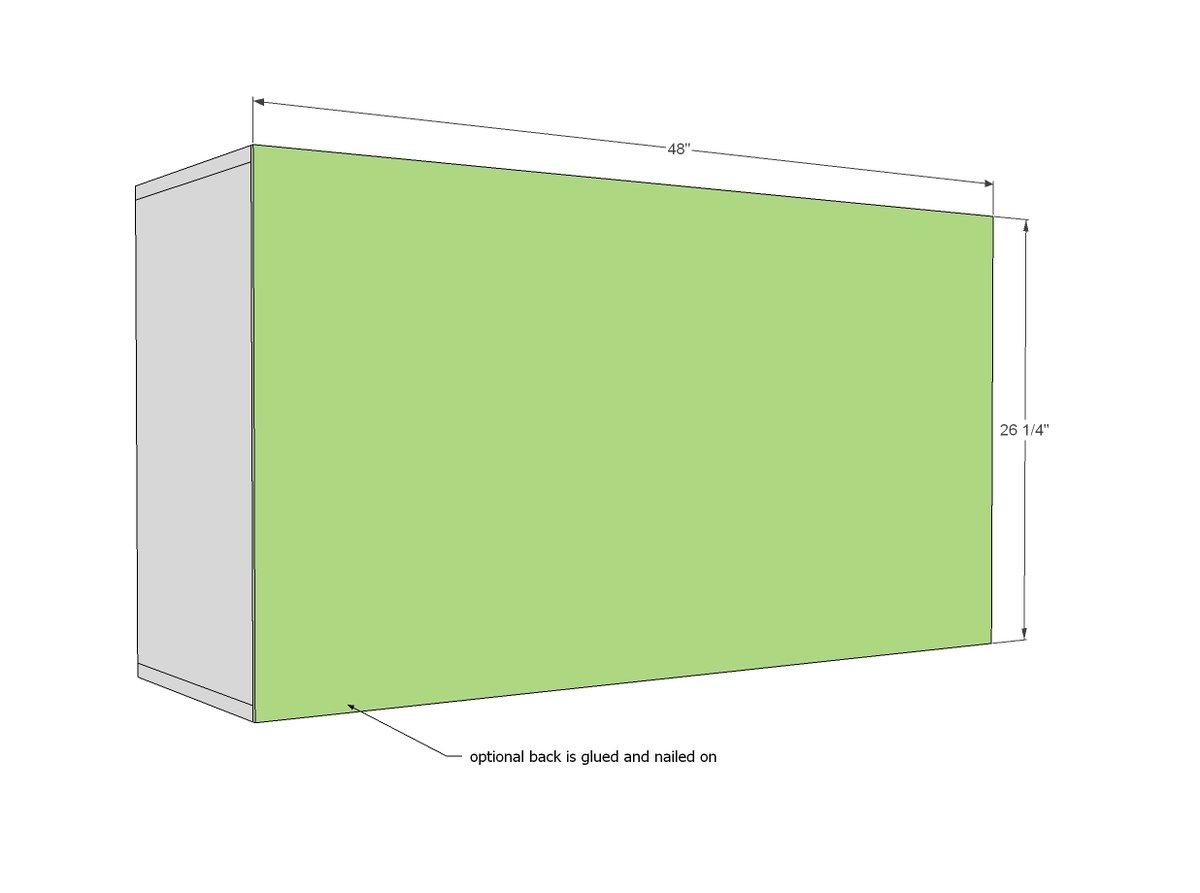
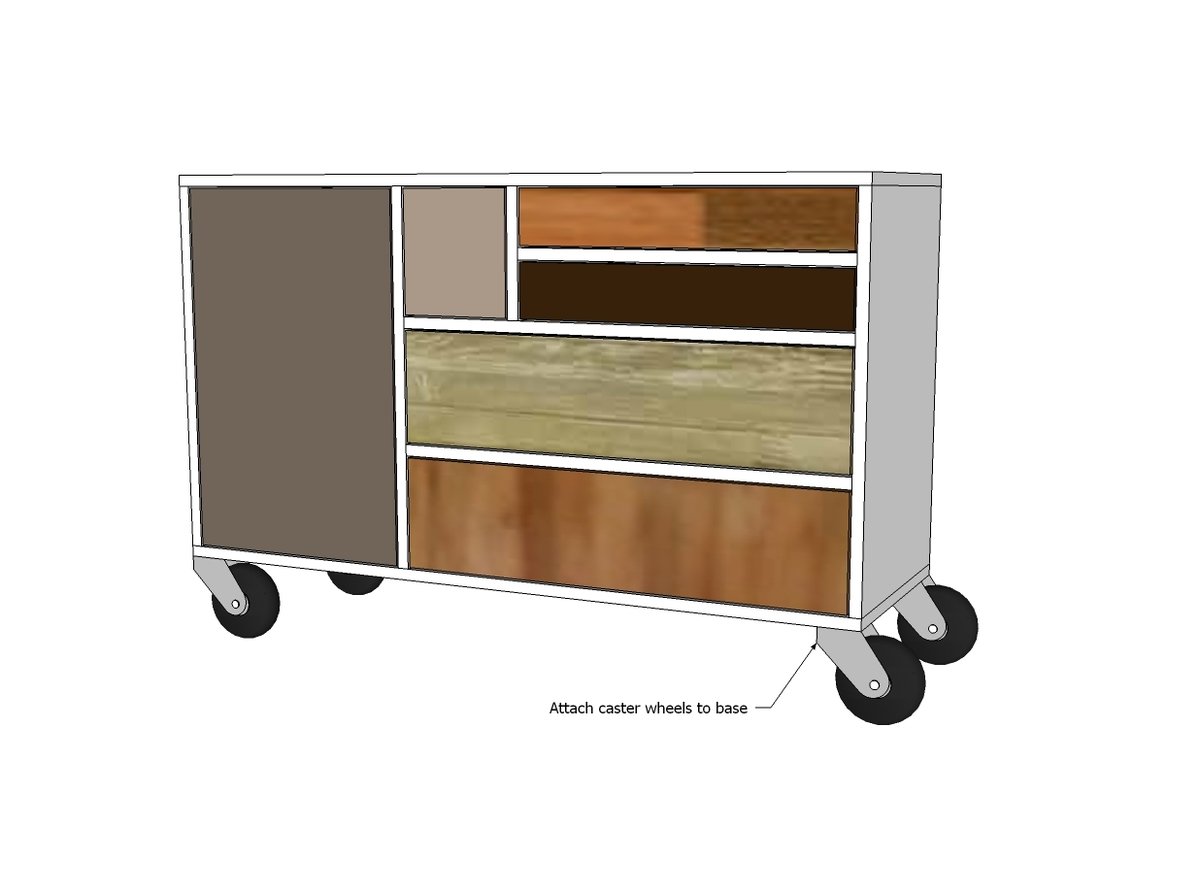
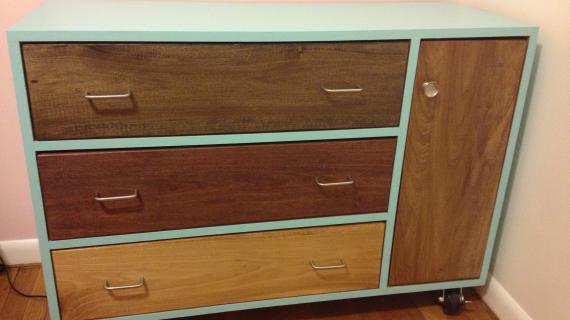
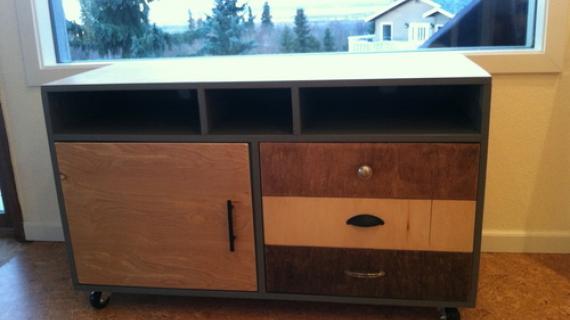
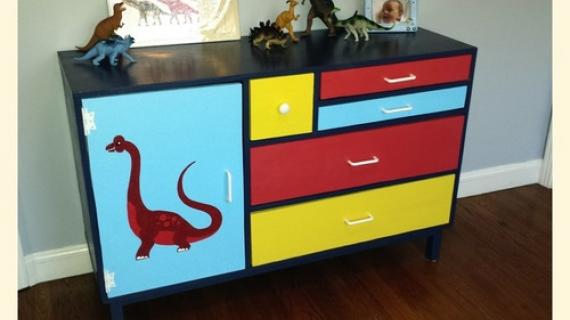
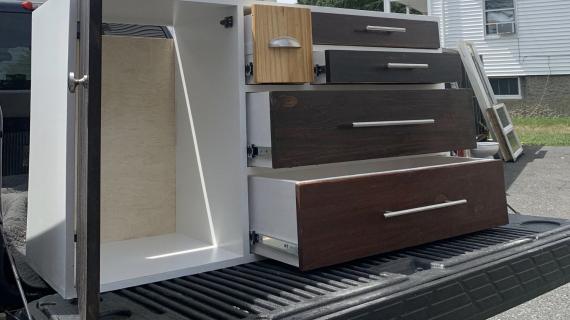
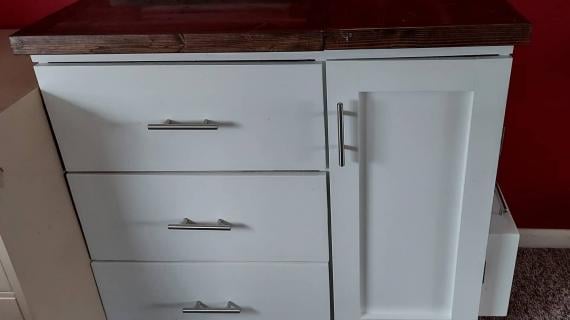

Comments
dmcarwin
Tue, 07/02/2013 - 15:19
Love!
Great job Ana and Ashley! I love the dresser!
biz_kid1
Wed, 07/03/2013 - 09:26
STOP!
My to do list is so full already!!!! LOL! But I see a modified version of this for our workshop in the garage!!!! Thanks! I LOVE the mixed finishes!
jkassel78
Fri, 07/05/2013 - 10:09
Yes! Thank you!
I have been drooling over this dresser for ever...could never afford it from west elm. Thank you so much for these plans, can't wait to get to work!
yurra-bazain
Sat, 07/06/2013 - 00:29
Beautiful work
Thank you both for taking the time to make plans and execute them beautifully. This dresser is well done, and so nicely styled. Being part of a community of doers has been empowering for me and has given me a new love for wood and the possibilities it holds. :)
Doyletron
Mon, 08/05/2013 - 06:33
Hey Ana, My husband and I
Hey Ana,
My husband and I started this build yesterday. We are having some difficulties reconciling the shopping list with the cut list. We seem to have lost the wood for the large cabinet face and the wood for the slim cross pieces for the frame that go between the drawers.
We went over everything we did twice, and we believe there may be a typo on your lists.
Hoping to be helpful.
Thanks for the plans.